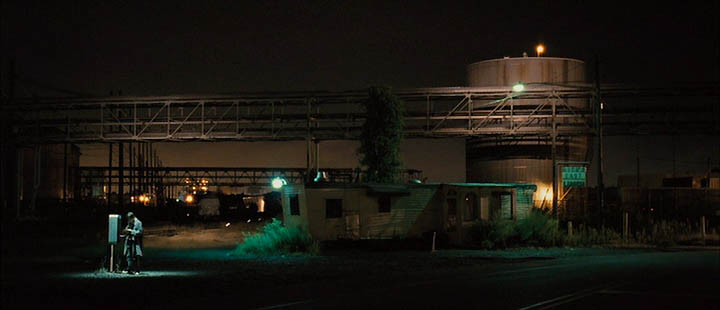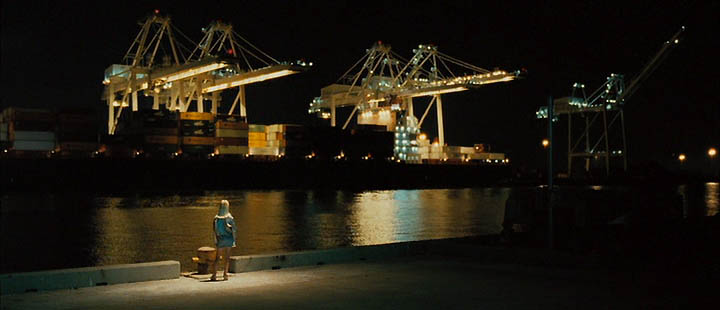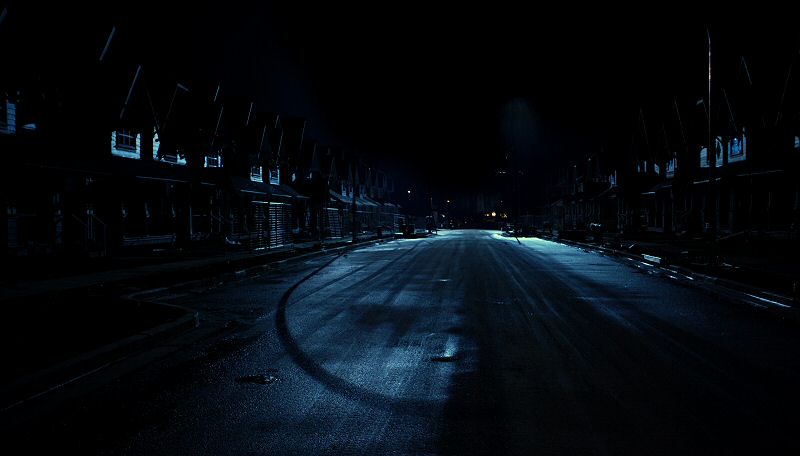Generally those big lights on condors are far and high so the final stop is often fairly wide-open so as to not overpower any available light. If you are trying to simulate moonlight, for example, it should not be spotty and localized, but fall more evenly over a wider area, so it helps to work with bigger lights farther away. The only exception tends to be in the woods where one light high above the treetops may just be eaten up too much by foilage, so you end up using multiple lights through gaps in the trees, aligned hopefully to feel like one light falling through the gaps.
Yes, you generally work at a wide aperture for a number of reasons, mainly because it allows you to capture what any available and practical light is giving you. It also is more economical, of course, compared to lighting large areas to a higher stop.
The exception may be an action scene where you want a higher f-stop to hold focus better as the cameras try to follow fast action, or where you plan on running some cameras at high frame rates, or where you plan on shooting a fiery explosion and don't want it to overexpose too much.
As to what f-stop, it sort of depends on how fast your film and lenses are, how shallow a focus do you want to live with, how dim the surrounding available light is, and simply how much light you can get on the scene.
For example, I've been shooting lately on the ARRI Alexa, often at 1600 ASA for night exterior work, sometimes with a 270 degree shutter, and I've been able to stick to T/2.8 zooms, I don't need the faster lenses. And I don't need to add a lot of light either if it's an urban street scene.
But for an indie movie called "Assassination of a High School President", I did some night exterior work out in the middle of an industrial area with very little natural or available light and ended up lighting the wide shot to f/1.4 (using Zeiss Master Primes) on 500 ASA film stock (Fuji Eterna 500T) pushed to 1000 ASA, just to capture what dim ambient light that was there in the far background... but it meant that I ended up using mostly just 1K's for the lighting of the foreground:
I added the mercury vapor lamp on the left end of the building, then had 1K tungsten PAR can's on a small 45' condor off frame left, one pointed down with Cyan 60 gel onto the actor, a couple of ungelled ones pointed at the structures in the background, and off frame right, there was a 9-light with just a few globes on, on the ground, adding a rake on the right side of the building.
For this scene by a waterfront shipping area:
I lit it with a small condor with a 5K overhead with CTO gel pointed down for the streetlamp effect on the girl, and again had some 1K PARCAN's pointed out at the far ship to sketch out some of the shipping containers, and some cyan fill. I lit it to f/2.0 at 500 ASA I believe. Again, I was trying to expose for the available light in the far background but had to add all the lighting in the foreground.
Now I used my digital still camera on scouts to get a rough idea of what the natural light looked at the ASA and f-stop combination I planned on using, and then added artificial light where needed on the shooting day.
But here was a location from "Jennifer's Body" where there was no available light, an unfinished track home development without power in the story, so moonlight was the only justifiable source of light. I had two 18K HMI's on condors backlighting the street, one raking each side of the street from one 125' condor... I took a photo but put my fingers in front of the lens to hide the condor and cut the flare. But even with all that light, I was still only shooting at f/2.0 at 500 ASA, and that was underexposed maybe 1.5-stops at least:
My snapshot on set:
Now since there were no natural light sources in the frame to balance to, it would have made no real difference to light to f/4 or f/5.6 other than improved depth of field... but two 18K HMI's were as much light as I could use, and I still ended up shooting wide-open because they were so far and high-up in order to cover as much area as possible.








